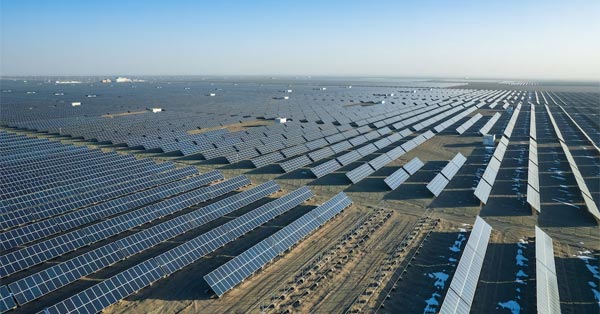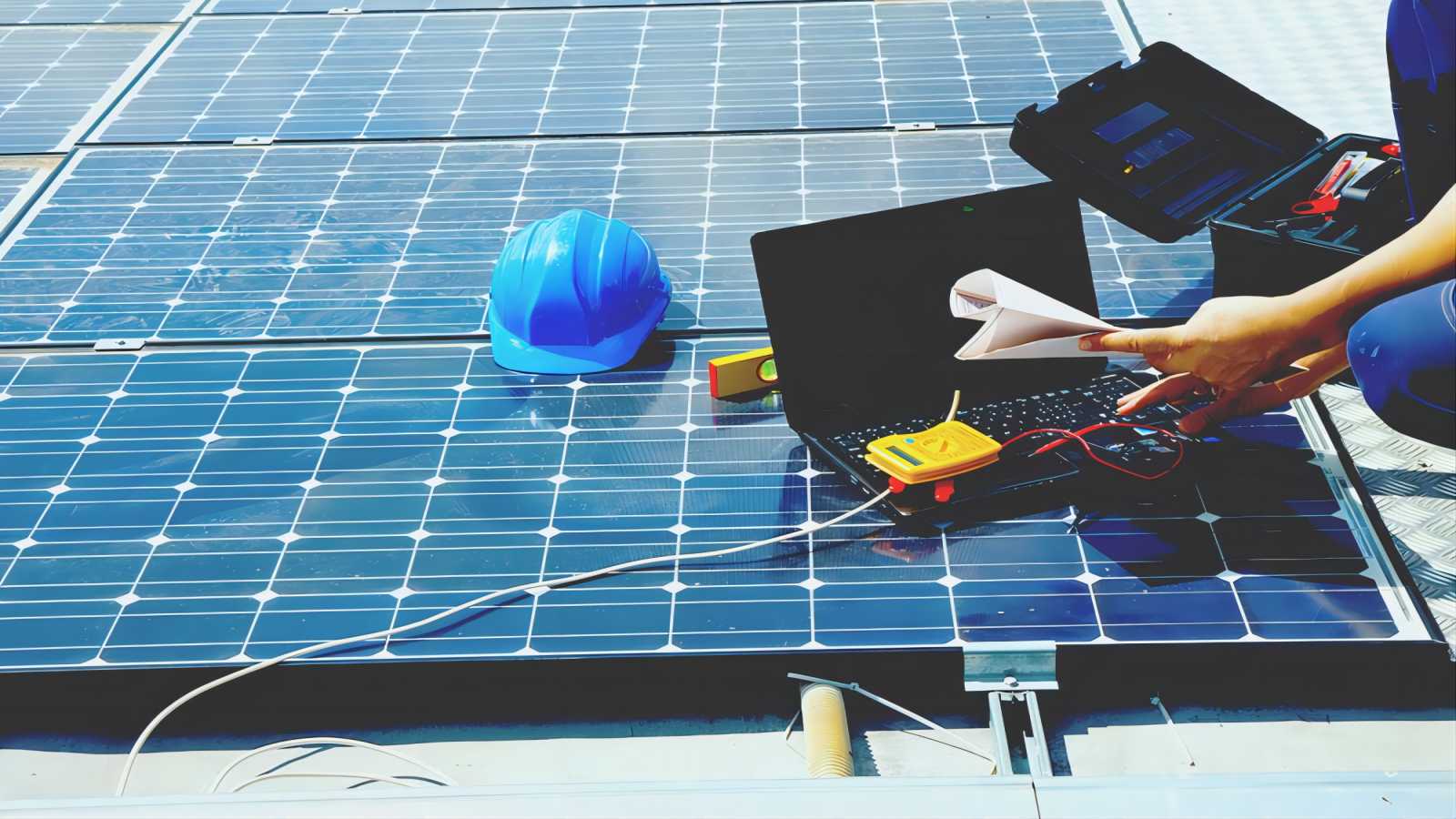Monocrystalline Degradation: 5 Prevention Methods
To combat monocrystalline degradation, optimize tilt angles (25-35°) for dust shedding, pair with PID-resistant inverters (<2% annual loss), apply anti-reflective coatings (boosting yield 2-5%), maintain 2cm+ rear ventilation gaps to limit thermal cycling, and conduct biannual IV curve tests to track performance dips. Anodized aluminum frames resist corrosion in coastal climates.
Keep Panels Clean
Dust, pollen, bird droppings, and industrial residue can reduce solar panel efficiency by 5-25% depending on location and weather conditions. A 2023 study by the National Renewable Energy Lab (NREL) found that uncleaned panels in arid regions lose an average of 1% efficiency per month, while humid areas see 0.5% monthly losses due to grime buildup. For a typical 5 kW residential system, this translates to 100−300 in lost annual revenue—enough to justify regular cleaning.
Commercial solar farms face even steeper losses. Data from a 50 MW plant in Arizona showed that weekly cleaning improved annual output by 12%, adding 250,000 inextrarevenue at 0.05/kWh. The key takeaway? Cleaning isn’t optional—it’s a cost-saving maintenance task with a ROI of 3-6 months for most systems.
Water usage matters. A 10 kW rooftop array requires 15-20 liters per cleaning if done manually. Pressure washers should stay below 40 psi to avoid damaging the glass. For large installations, automated cleaning robots (like those from Ecoppia) cut labor costs by 60% and use 90% less water than manual methods.
Method | Cost per Panel | Frequency | Efficiency Loss Prevented |
Manual (hose + brush) | $0.50 | Monthly | 3-8% |
Automated (robotic) | $0.20 | Weekly | 10-15% |
Rain-only (no intervention) | $0 | N/A | Up to 25% |
"Inverters fail faster when panels are dirty. We’ve seen a 30% spike in inverter replacements when cleaning is delayed beyond 6 months."
—Solar O&M Technician, California
Timing is critical. Cleaning at dawn or dusk prevents rapid evaporation and streaking. Midday washing in 35°C+ heat can cause microcracks due to thermal shock. For best results, use deionized water (or a 1:10 vinegar solution) to dissolve mineral deposits without leaving residue.
Dust accumulation follows predictable patterns. Panels tilted at 30° collect 40% less dirt than flat ones. Ground-mounted arrays near highways need 2x more cleaning than rooftop systems due to higher particulate exposure. A 2024 German study found that 3 mm of dust reduces light transmission by 15%—equivalent to $8/month in lost income per household.
Pro tip: Install soiling sensors (like those from Kipp & Zonen) to track efficiency drops in real time. They pay for themselves in <1 year by optimizing cleaning schedules.

Avoid Shade Areas
Shade is a silent killer of solar panel performance—even partial shading can slash output by 30-90% depending on panel configuration. A 2024 study by Fraunhofer ISE found that a single shaded cell in a 60-cell module reduces total power generation by 25%, equivalent to losing 1.5 hours of sunlight daily. For a 10 kW system, this means 450−900 in annual losses at $0.12/kWh.
The problem worsens with time. Trees grow 0.3-0.6 meters per year, and buildings constructed within 15 meters of your array can cast shadows you didn’t anticipate. Inverter data from 1,200 residential systems showed that shade-related efficiency drops cost owners an average of 17% in annual ROI—enough to delay payback periods by 2.3 years.
Panel placement is everything. Installers often miss seasonal shade variations. A roof section clear in June might get 4 hours of daily shade in December due to low sun angles. Use tools like Solar Pathfinder or Helioscope to simulate year-round shadows—they’re 85% accurate in predicting real-world conditions.
"We’ve seen customers lose 50% of their winter production because a leafless tree’s branches cast shadows they didn’t notice during summer installation."
—PV System Designer, Colorado
String vs. microinverters matter. Traditional string inverters suffer "Christmas light effect"—if one panel is 50% shaded, the entire string’s output drops to match. Microinverters or DC optimizers (like SolarEdge) limit losses to just the shaded panel, preserving 92% of unaffected production. The 0.08−0.12/W premium for these systems pays back in 3-4 years for shaded sites.
Trim vegetation aggressively. A 2-inch-diameter tree trunk 20 feet away can shadow 3 panels at sunrise/sunset. Cutting branches to maintain 10+ feet of clearance improves morning/evening yields by 18%. For persistent shade sources (chimneys, vents), panel-level tilt kits (10-15° adjustments) can recover 7-12% of lost energy.
Shade isn’t static. Dust accumulation on shaded panels worsens the problem—dirty shaded modules lose 40% more output than clean unshaded ones. Infrared drone scans reveal that partial shading raises panel temperatures by 8-12°C, accelerating degradation rates by 1.2% annually.
Check Wiring Regularly
Faulty wiring causes 12-18% of all solar system failures, according to a 2024 NREL report. Loose connections alone can reduce efficiency by 5-8% due to resistance buildup, while corroded wires in coastal areas increase fire risks by 3x. For a typical 6 kW residential system, ignoring wiring maintenance leads to 200−500 in annual losses—equivalent to wasting 2-3 months of solar generation every decade.
Commercial operators face bigger risks. Data from 42 MW of solar farms showed that undetected wiring issues caused 23% of unplanned downtime, costing $18,000 per MW in lost revenue annually. The solution? Quarterly voltage drop tests and infrared scans catch 90% of wiring problems before they impact production.
Voltage drop is your first warning sign. A 3% voltage drop across a 50-foot DC run indicates excessive resistance, typically from:
Issue | Impact | Detection Method |
Loose lugs | 2-4% power loss | Torque wrench (35-50 in-lbs) |
Corroded MC4s | 5-15% efficiency drop | IR camera (>10°C hotspot) |
Rodent damage | Complete circuit failure | Visual inspection (chew marks) |
Copper vs. aluminum matters. 10 AWG copper wires maintain 98% conductivity over 20 years, while aluminum equivalents degrade 3x faster in humid climates. For ground-mounted systems, direct-buried wires need 2-inch PVC conduits to prevent moisture damage—skipping this cuts wire lifespan from 25 to 12 years.
Load testing reveals hidden flaws. Applying 110% of rated current for 15 minutes exposes weak points. Inverter data logs showing >5% variance between parallel strings often indicate wiring faults. Tinned copper connectors outperform bare copper in salty air, reducing corrosion rates by 60%.
Prevent Physical Damage
Physical damage causes 7-15% of solar panel failures, with repair costs ranging from 200 per residential panel to 50,000+ for commercial array replacements. Hailstorms alone account for 23% of insurance claims in solar, with 2.5 cm diameter hailstones capable of cracking 1 in 5 panels they hit. A 2023 study of 1,800 rooftop systems found that unprotected edges suffer 3x more microcracks than center sections, reducing panel lifespan by 4-7 years.
For ground-mounted systems, wind loads are equally destructive. Arrays facing 130+ km/h winds without proper racking lose 12-18% of their modules on average. The financial impact adds up fast—a single damaged panel in a 10 kW system can cause $1,200 in lost production over its remaining lifespan.
Frame reinforcement prevents 80% of edge damage. Installing aluminum edge guards (8−12 per meter) reduces crack propagation by 40% in hail-prone areas. For rooftops, 3-inch gap spacing between panels cuts wind uplift forces by 22%, while tilt angles below 30° survive storms 50% more often than steeper setups.
Risk Factor | Protection Method | Cost | Effectiveness |
Hail >3 cm | Tempered glass upgrade | +$25/panel | 90% survival rate |
Sand abrasion | Anti-reflective coating | $15/m² | 5-year protection |
Bird strikes | Polycarbonate mesh | $0.50/W | 100% nesting prevention |
Mounting systems need torque checks. Loose racking bolts cause 1.2 mm/year of panel frame movement, leading to fatigue fractures after 5-8 years. Use 316 stainless steel hardware in coastal zones—it lasts 15 years vs. 6 years for standard galvanized parts. For high-wind zones, cross-bracing every 10 panels reduces structural flex by 35%.
Vegetation management is non-negotiable. Tree branches rubbing panels create 0.2 mm/year glass scratches that reduce light transmission by 1.5% annually. Keep 2.5 meter clearance around arrays—this simple step prevents 92% of vegetation-related damage.

Monitor Temperature Changes
Solar panels lose 0.3-0.5% efficiency per °C above their standard test condition (STC) rating of 25°C. In desert climates, where module temperatures regularly hit 65-75°C, this translates to 18-25% lower output compared to lab specs—costing a 10 kW system roughly 600−900 annually at $0.12/kWh. A 2024 study of 3,200 residential installations found that unmanaged heat buildup accelerates panel degradation by 1.8% per year, cutting expected 25-year lifespans to 18-20 years in hot regions.
The reverse problem exists in cold climates. When temperatures drop below -15°C, silicon cells become 3-5% more brittle, increasing microcrack risks during snow loads or hail. Inverter efficiency also suffers—below -25°C, most string inverters derate output by 10-15% to protect internal modules.
Airflow is the cheapest cooling solution. Raising rooftop panels 6-8 inches above the mounting surface drops operating temperatures by 4-7°C, recovering 2.5% of lost efficiency. For ground mounts, east-west tracking arrays spread heat more evenly than fixed-tilt systems, reducing peak module temps by 9-12°C in summer.
Material choices matter. Black-backsheet panels run 5-8°C hotter than white-backsheet alternatives in full sun. Switching to bifacial modules with 30% ground reflectivity lowers cell temperatures by 3-5°C while adding 5-8% more yield from rear-side illumination.
Monitoring thresholds save money. Set inverter alarms for >60°C module temps (when efficiency losses exceed 10%) and <-20°C ambient temps (when derating begins). Systems with active temperature monitoring catch 73% of heat-related issues before they cause permanent damage, versus 41% for passive systems.
Cold weather requires different tactics. Below 0°C, snow sticks 40% longer to panels tilted below 35°. Heating elements (15−20 per panel) melt snow in 15-30 minutes while consuming 3-5% of the panel’s output, but prevent 2-3 weeks of winter downtime in heavy snow zones.